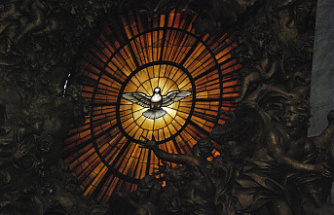The European Union wants a single connector for all types of electronic devices of small size. If the affirmation sounds like it is because it is not about the first time you try.
This has been one of the obsessions of Brussels during the last decade. He tested with the Microusb standard and left him regular. Now return to attack with USB-C. The good news is that it seems that there seems to be some consensus.
Although the standard is not yet approved, the Committee who has studied the case has already its proposal: All mobiles and other small devices must have a USB-C connection on the device and use a standard wall USB charger within two years.
The reason is environmental. It is about reducing, as far as possible, the amount of electronic waste that is generated every year.
Input is a laudable goal, although the regulation reaches somewhat late. Most manufacturers have already begun to migrate most products to USB-C, especially in the case of telephony. The only one who resists is Apple, which continues to use a lightning connector on the iPhone and some of its accessories.
The reasons are several but it is mostly a lack of synchrony with the rest of the industry. Although the company earns money with the Lightning license and the MFI program (Made for iPhone / iPad) of official accessories, it is a very small contribution to its quarterly accounts.
The reason why Lightning exists is that Apple needed a substitute for the 30-pin connection that the original iPhone inherited from the iPods. In 2012, the microusb connection could not support the same functions, so it had to create a new eight-pin connector, reversible and programmable.
A few years later what was learned from the experience took advantage of the development of the current USB-C connection (Apple is one of the members of the USB consortium and contributed to the design of the new port) but for when this new connection began to popularize, the iPhone already had a great ecosystem of accessories that depended, and they still depend, of Lightning.
This has ended up creating a complex situation. Almost all manufacturers have abandoned the chargers with proprietary connections. Apple also, in theory, because although it uses a lightning connection on the phone, the port on the charger or device from which the device is loaded is always a USB-A or USB-C.
In this way we have reached a world in which we walk from a single standard in the chargers, USB-C, but two possible connections on the device to be loaded (USB-C or LIGHTNING).
Apple defends this situation arguing that forcing a concrete connection on the device is a brake on innovation. After all, if Europe had required the same with Microusb (as it came to propose), the development and implementation of USB-C would have been delayed enough. Until the European Commission did not decide to change the regulations, no manufacturer could have integrated a USB-C on telephones, or at least not as an exclusive port.
Its proposal, therefore, is to standardize only the chargers (which more or less is the current status quo), leaving the connection on the device at the discretion of the manufacturers. If tomorrow Apple, Xiaomi or Samsung decides that they need a different connection to cover a specific need, they can implement it including only the necessary cable with USB-C termination at one end next to the product.
It is something that the commission has considered, but finally it does not seem to go to prosper. If Apple wants to use Lightning or any other port, says Europe, you can do so, as long as your phones also have a USB-C port.
The Commission proposal also includes another controversial aspect. The text specifies that manufacturers must give the option not to include chargers in the phone boxes.
Although the text is drafted so that it seems that the option to buy a smartphone with a charger has it the consumer, it is most likely that all devices end up dispensing from it to save costs and opt for mobile packs with charger as an accessory Separated (and at higher price) for those who need one. It does not make sense to make two mobile boxes, one with charger and another without it.
According to the Study of the Commission, in European households there are already an average of three telephone chargers and therefore it is unnecessary that they continue to be distributed with each new terminal.
But the problem is that many of these chargers who are already in homes do not always take advantage of fast loading functions that today have many smartphones and most still use the USB-A port. Although there are phones that come with USB-A cables to USB-C, or a USB-A adapter to USB-C, it is normal that there is only one USB-C cable to USB-C in the box.
Fortunately, the proposal of the regulation leaves the door open to whether it can be followed including cables with the smartphone, but only if it serves "for something more than to load". Due to peculiarities of the USB standard implementation, not all USB-C cables are capable of loading at the same speed or have data transmission function, which complicates the panorama for companies and users.
With the proposal on the table, the 27 countries of the European Union now have to evaluate the situation. Hence, the law is finally approved, they can spend months or years. It is possible that until the middle of the decade nothing really changes.
With such dilated deadlines, it is possible that in Apple they are thinking about a different alternative: completely eliminate the physical port and move to a design in which the load is made exclusively wirelessly.
Rumors about this design decision began to circulate more or less when Apple finished forever with the port of headphones connection. It is clear that the company seems determined to simplify the internal design of the iPhones and the Lightning connection, even if it is small, occupies a space that Apple could take advantage to add more battery or reduce the thickness of telephones.
The only obstacle faced is to find an alternative to be able to transfer data and connect to a computer to perform support and maintenance tasks, although this is something that can technically be done wirelessly or through a smaller physical connection That does not include load function.
Date Of Update: 30 September 2021, 04:34











